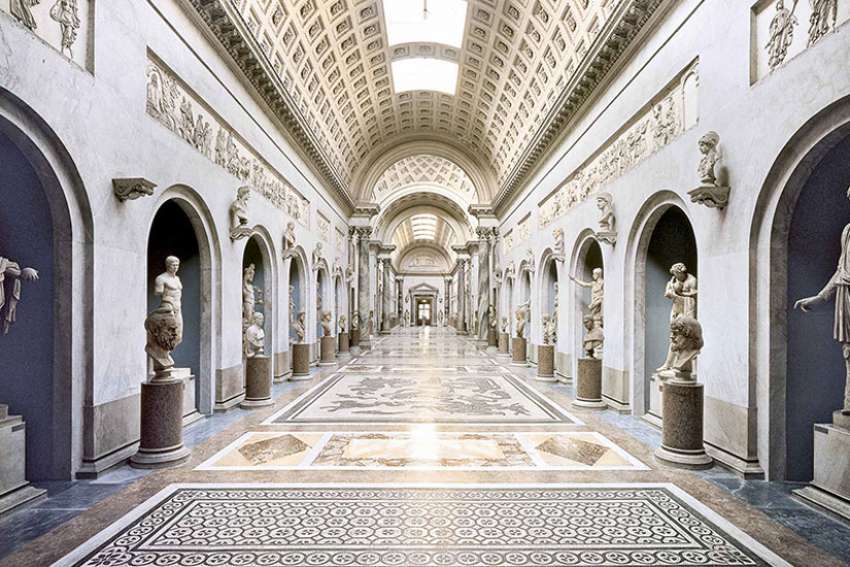The Braccio Nuovo Gallery, located inside the vast museums complex, is filled with stunning marble busts and statues dating back to the height of the Roman Empire.
Built between 1816 and 1822, the gallery has been closed for seven years but will officially reopen Thursday (Dec. 22).
Using the latest technology, the museums’ top experts have restored the gallery, adding special measures designed to protect its precious stuccos and marble treasures from earthquakes in a country that has been hit hard by three devastating quakes about 100 miles north of Rome this year.
“We have made the structure secure,” said Micol Forti, curator of the museums’ 19th-and 20th-century art.
“This was a very fragile structure because this gallery was built in a short period of about five years when the Vatican was especially poor after the Napoleon period,” she said.
The art pieces were brought together for display at the museums by the famous sculptor Antonio Canova during the pontificate of Pope Pius VII.
The restoration, which was funded by American and European museum patrons, involved 80 professionals, including architects, decorators, art restorers and engineers as well as scientists from the museums’ research laboratory.
It was a massive undertaking and one that not only involved collaboration across different arts specialties but private firms as well.
“We are very proud of this,” Forti said. “We have worked very hard. We are very happy with the collaboration of our institutions and are very happy with the results.”
About 140 sculptures will go on display, including portraits of gods, sculptures of Roman emperors and their wives, friezes and sarcophagi inside the 230-foot-long gallery.
Ancient black and white mosaics were restored in the floors and more than 1,000 rosettes and pieces of stucco were removed and later reattached with five lynchpins apiece to make them more secure in case of a quake.
“Every rosette, every piece of stucco has been removed, cleaned and reattached. We have used a new system where every rosette now has five hooks attached to it,” Forti said. “Every bust you can see has been reattached at the base.”
The gallery features two gilded bronze peacocks, which may have come from the Roman Emperor Hadrian’s Mausoleum; the statue of Nile; and a Roman copy of a first-century Hellenistic statue originally found in the Temple of Isis, near the Pantheon.
 Workers restore the ceiling of the Braccio Nuovo Gallery at the Vatican Museums in Rome on May 11, 2015. RNS photo/courtesy of the Vatican Museums
Workers restore the ceiling of the Braccio Nuovo Gallery at the Vatican Museums in Rome on May 11, 2015. RNS photo/courtesy of the Vatican Museums


